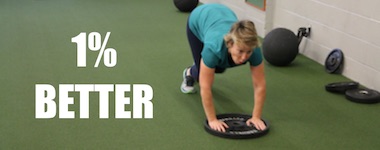We have been using a really cool technique at TFW for our warm ups called RPR (Reflexive Performance Reset) or Be activated.
We know it might feel a little weird or seem like voodoo, but you have to trust us on the application and the results can be amazing.
We are under constant stress, which is interpreted as survival mode by your body. When in survival mode your body utilizes harmful compensation patterns which can lead to injury. RPR or Be Activated techniques resets the body out of survival mode and into performance mode.
 Your body has two priorities for optimal performance; to breathe and move correctly. Our bodies find a way to meet those priorities by creating harmful compensation patterns.
Your body has two priorities for optimal performance; to breathe and move correctly. Our bodies find a way to meet those priorities by creating harmful compensation patterns.
How can activations changes performance?
You should be exploding. Movement in the human body happens from the inside out – starting with the core. But as stress and tension accumulate over time, key muscles can “switch off” and stop doing their work. Your body will compensate, using stronger muscles to do the work of weak or non-functioning ones.
The result is loss of balance, imperfect movement and over-taxed muscles that can lead to injury. And because the nervous system is affected too, under-performing individuals show reduced reflexes and poor mental focus.
You can power through it. Or you can correct these compensations with the Be Activated or RPR techniques.
Self-Activation is built on two easy principles:
- Intentional diaphragmatic breathing stimulates the core and balances the nervous system, preparing body and mind for better performance
- Stimulation of pressure points re-activates core muscles like the glutes and psoas, returning the body to its ideal “inside-out” sequence of movement.
By breathing correctly and rubbing key areas with your hands or with a Self-Activation Stick before physical activity, you will improve performance and reducing injuries. The changes are immediate, and the results are measurable.
Coming from personal experience, I had some issues with my pelvis post having our son, which led to dysfunction when trying to deadlift. I learned that my psoas was not turned on and with some very simple activation techniques I have not had any issues since! Let alone back pain!
We can perform an assessment to see where you may have dysfunctions and if you are experiencing pain it is worth a shot to get assessed! Shoot us a message, we would be glad to help!
The best part about RPR and Be Activated is once you learn how to do this technique you can do it on yourself before your workouts!
Let us know if we can help you!
Arin




Leave a Reply